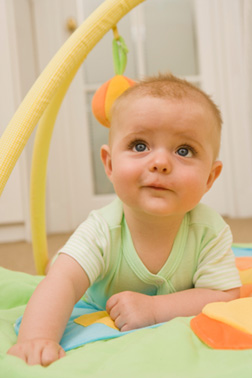How do we know that the babies who miss out on tummy time are at a lasting as opposed to temporary disadvantage? Looking at data from thousands of people born in 1966 in Northern Finland, a research group led by Charlotte Ridgway at the Institute of Metabolic Sciences, Cambridge, has shown that a one-month delay in infant motor development had the same detrimental effect on how a 14-year-old performs in physical education class as a one-unit increase in the same child's body-mass index. Using the same Northern Finland cohort, Ridgway and her co-authors also mapped a one-to-one link between the age at which infants stand unaided in their first year—another critical prewalking milestone—and their muscle strength and endurance, as well as cardiovascular fitness, at age 31.
Another team of researchers, led by Graham Murray at the University of Cambridge, has been looking into how early motor lags could affect other parts of the brain, like the areas responsible for cognitive functions. Using Northern Finland data as well as stats from second group of Brits born in 1946, this group found that the sooner children passed their prewalking motor-development marks, the better the more-complicated areas of their brains performed in later life. Every month in advance of the group average that a child learned to stand on his or her own translated to a half an IQ point increase at age 8. By age 26, early motor developers had higher reading comprehension. And by the time they hit their 30s, they had achieved a higher level of education and scored better on executive-function tasks like categorization—how fast they could group objects of similar shape and color.
What's the best way to make sure that babies who sleep on their backs get their share of tummy time? Dr. John Graham, a pediatrician and director of the Dysmophology Program at Cedars Sinai Hospital in Los Angeles, suggests parents get started soon after they bring their babies home from the hospital. (The exceptions to the tummy-time rule, Graham notes, are babies with weak or stiff necks, an occasional side effect of birth.) With babies who are too young to support their own heads, parents can lie down and cradle them on their chest, introducing the stomach position in a comforting way. When infants get older and get the head-lifting thing down, regularly placing toys around their field of view encourages them to look around and stretch. It's pretty basic, really. And if babies cry because they're not used to the stomach position, stick with it for a bit anyway. The long-term benefit is worth the short-term fuss.
source;















